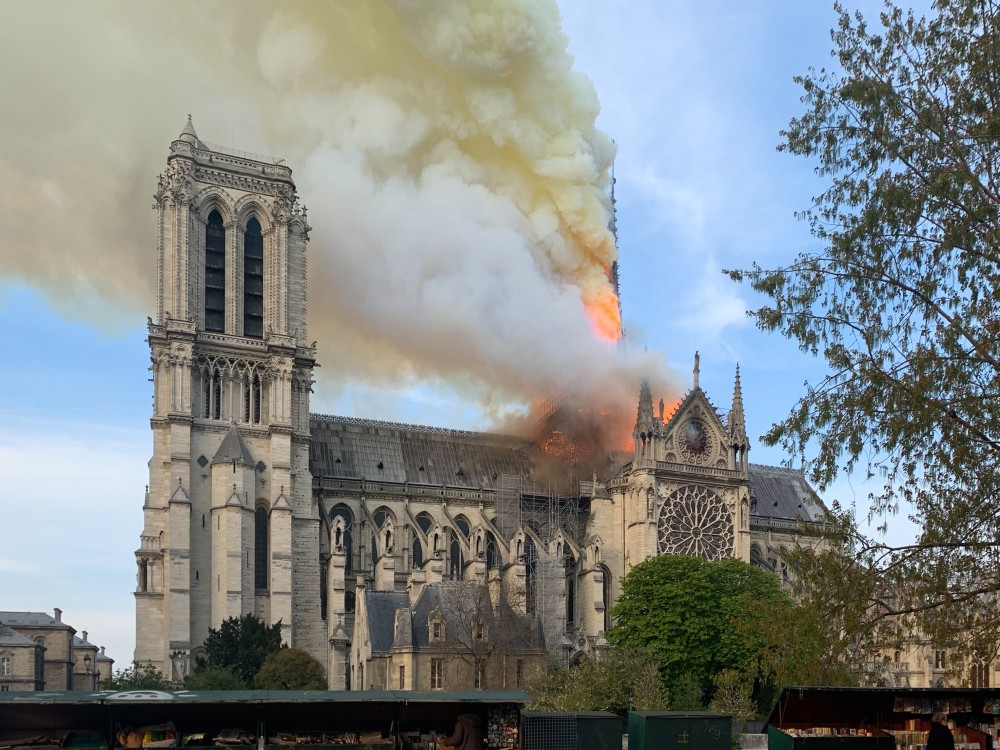I learned to pray at Notre Dame Cathedral
Was the familiar God I knew as a preacher's kid the same one who inspired such greatness?

On Monday, Notre Dame de Paris was engulfed in flames. The spire fell. The organ is gone. All that stained glass. I couldn’t watch the video; the photo that Rebecca Solnit posted on Facebook was hard enough. Her caption reads, “Drone picture from earlier (which I find shocking, like seeing open-heart surgery: this structure has not been open to the sky for 800 years).”
I’ve only been to Paris once, many years ago, but I remember it well. I remember coming up close to the cathedral—not knowing where to start looking, feeling unable to take it all in.
I’m a preacher’s kid. (Half my stories start this way.) I grew up in United Methodist church buildings; they were my home away from home. I knew those churches intimately, their ins and outs and secret closets and ladies’ bathrooms. I knew which sink didn’t work and which floor tiles were loose and the best spots to hide while playing sardines. I knew their people, their songs, their stories. I loved them, and they loved me.




